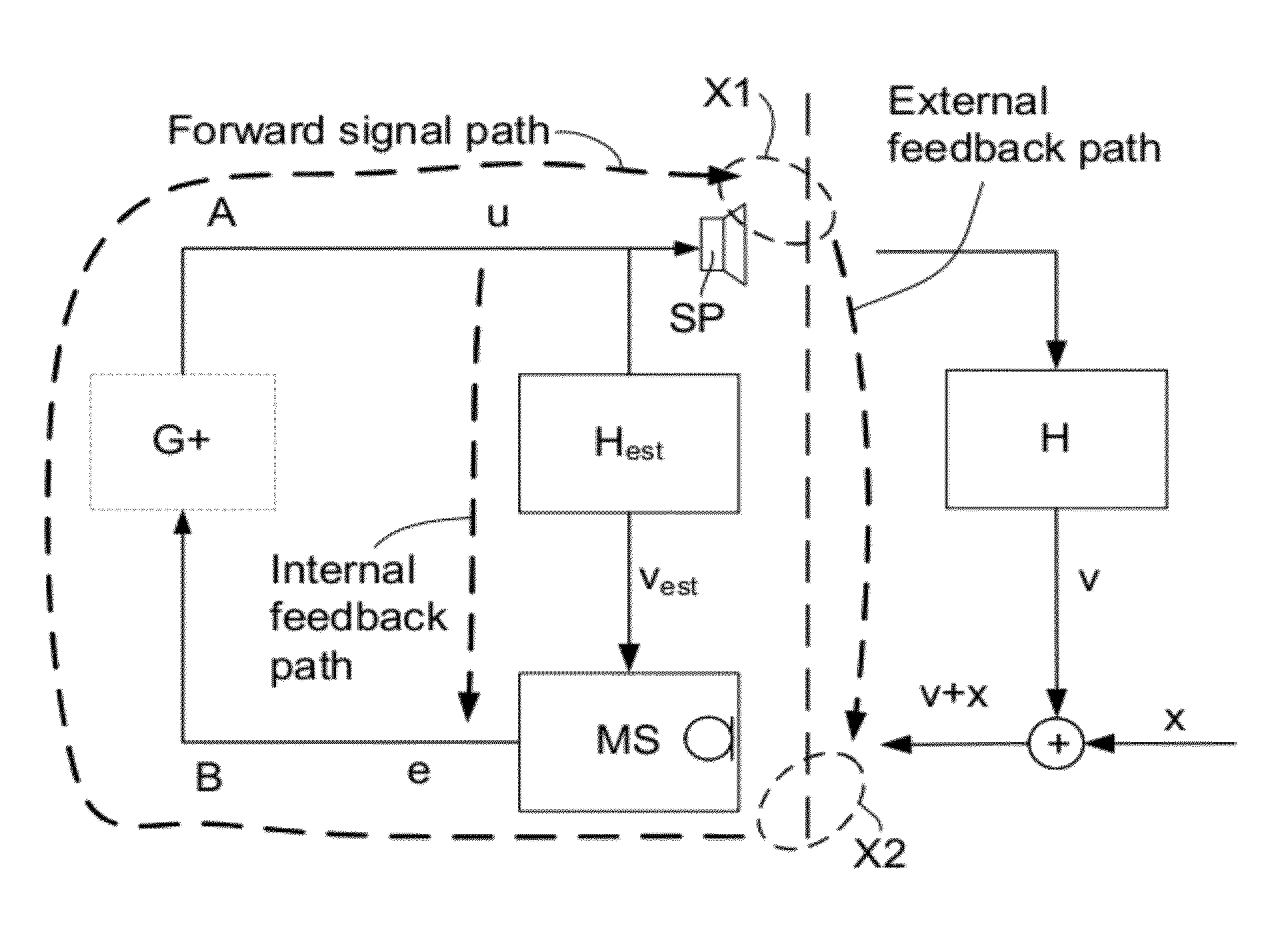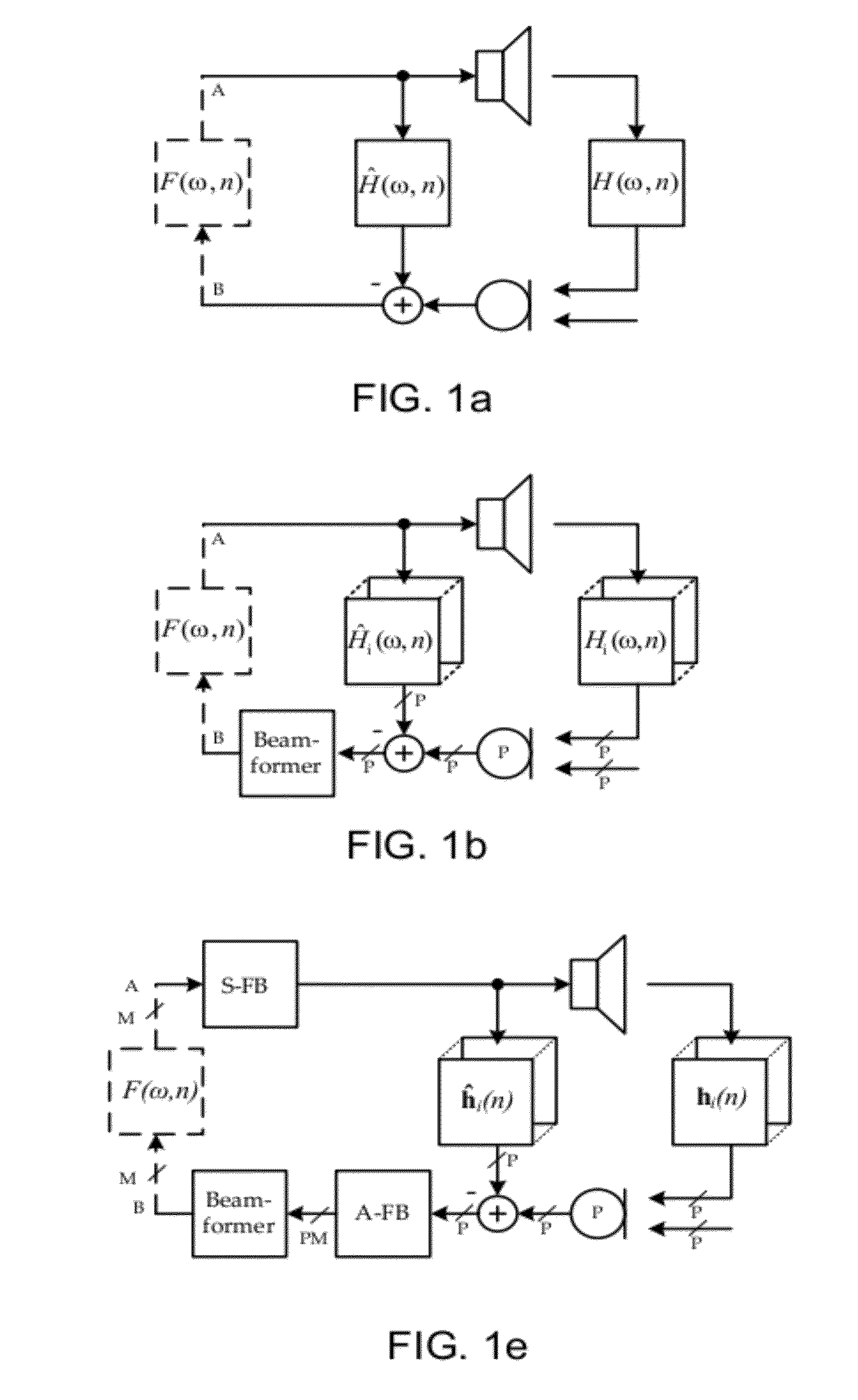Method of determining parameters in an adaptive audio processing algorithm and an audio processing system
an audio processing algorithm and parameter determination technology, applied in the field of audio processing, can solve the problems of system instability, no direct relationship between acoustic feedback and developers, and the effect of audible acoustic feedback
- Summary
- Abstract
- Description
- Claims
- Application Information
AI Technical Summary
Benefits of technology
Problems solved by technology
Method used
Image
Examples
examples
[0109]In this section, three examples illustrating a possible use of aspects of the present invention are given (based on the LMS algorithm):[0110]1. Prediction of the transient and steady state of {circumflex over (π)}(ω,n).[0111]2. Step size control to achieve a certain convergence rate at the transient part.[0112]3. Step size control to achieve a certain steady state value {circumflex over (π)}(ω,∞)
[0113]In the first example, equation (1) above is be used to predict {circumflex over (π)}(ω,n), when all system parameters are given. The predicted values can be used to determine the maximum allowable gain in the forward path to ensure the system stability.
[0114]If, e.g., the predicted value of {circumflex over (π)}(ω,n) is −30 dB, then we know from the stability criterion that the gain in the hearing aid must be limited to 30 dB.
[0115]An example of prediction of transient and steady state in a 3 microphone system is shown. The radian frequencies to be evaluated are
ω=2πlL,
where l=3, ...
PUM
 Login to View More
Login to View More Abstract
Description
Claims
Application Information
 Login to View More
Login to View More - R&D
- Intellectual Property
- Life Sciences
- Materials
- Tech Scout
- Unparalleled Data Quality
- Higher Quality Content
- 60% Fewer Hallucinations
Browse by: Latest US Patents, China's latest patents, Technical Efficacy Thesaurus, Application Domain, Technology Topic, Popular Technical Reports.
© 2025 PatSnap. All rights reserved.Legal|Privacy policy|Modern Slavery Act Transparency Statement|Sitemap|About US| Contact US: help@patsnap.com



